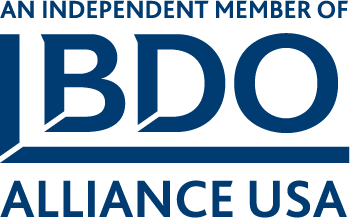Crosslin is pleased to present a six-part series on the American Rescue Plan Act of 2021, covering topics such as stimulus payments, child tax credit, employee retention credit, enhanced earned income tax credit, child and dependent care tax credit, and paid medical and family leave credit. Check back with us throughout the next two weeks to read more about these current hot topics. As always, contact the Crosslin tax team with any questions. Today’s summary discusses the latest round of stimulus payments.
The American Rescue Plan Act of 2021 includes a third round of direct stimulus payments for taxpayers. The Coronavirus Aid, Relief, and Economic Security (CARES) Act signed into law in March 2020 included the first round, with $1,200 for individuals and $500 for qualifying children. In December 2020, the Consolidated Appropriations Act, 2021, provided an additional $600 stimulus payment, for taxpayers and children.
At the time of the second payment, many lawmakers, as well as former President Trump and then President-Elect Biden, stated that the amount should be increased to $2,000. As a result, the American Rescue Plan provides a $1,400 stimulus payment ($2,800 for joint returns) plus $1,400 for each dependent. The payments are essentially credits against 2021 taxes, but fully refundable and payable in advance (similar to the prior payments). Also, like previous stimulus payments, this third round is subject to income limitations.
Under the American Rescue Plan, the amount of the payment phases out ratably for single filers with adjusted gross income over $75,000 ($112,500 for heads of households and $150,000 for joint filers). The stimulus amount phases down to $0 for single filers with $80,000 of adjusted gross income ($120,000 for heads of households and $160,000 for joint filers).
Adjusted gross income amounts for the 2020 tax year are used in applying the phaseout, but 2019 amounts will be used in lieu of 2020 amounts for taxpayers who have not yet filed 2020 returns. The Treasury and IRS are granted authority to provide payments to nonfilers based on available information. As was the case with the last two stimulus payments, amounts to which taxpayers would have been entitled but did not receive will be creditable when preparing 2021 tax returns in 2022. Also, amounts received based on 2019 or 2020 returns that would have been lower when 2021 returns are prepared do not have to be repaid.
Tax Planning
Taxpayers who have an increase in adjusted gross income in 2020 as compared to 2019 may want to hold off filing 2020 returns until the filing deadline. This will maximize the amount of stimulus payments received because their stimulus payment will not be potentially reduced by the higher 2020 adjusted gross income.
In order to be eligible for a stimulus payment, the individual must not be:
• a nonresident alien,
• able to be claimed as a dependent on another taxpayer’s return,
• an estate or trust, and
• must have included a Social Security number for both the taxpayer, the taxpayer’s spouse, and eligible children (or an adoption taxpayer identification number, where appropriate).
As soon as practicable after the IRS distributes any payment to an eligible taxpayer, the IRS will send a notice by mail to the taxpayer’s last known address. The notice will indicate the method by which the payment was made, the amount of the payment, and a phone number to contact at the IRS to report any failure to receive such payment.
Contact the Crosslin tax team at (615) 320-5500 with any questions. We are here to help!







